What's New
Displaying results 101 - 110 of 4052
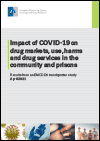
Resource | Publications,
On 11 March 2020, the World Health Organization declared COVID-19 a pandemic. Since then, the virus has claimed millions of lives and has transformed nearly every aspect of our individual and collective reality. As with all areas of life, drug consumption, related harms and drug markets have been impacted, as have the services established to respond to drug-related problems. During the first weeks of the pandemic, the EMCDDA instigated two rapid assessment studies to identify the initial impact and implications of COVID-19. These studies identified signs of an overall decline in some forms of drug use during the first 3 months of the pandemic, largely as a result of national confinement measures. In addition, many drug services were forced to close or restrict their access, new measures for hygiene and social distancing were implemented, and there was a shift towards greater use of telemedicine.
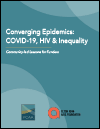
Resource | Publications,
The long-term impact of disruptions in access to essential health services during lockdowns, including harm reduction, sexual and reproductive healthcare, and HIV prevention, testing, and treatment programs, is still unknown. Governments in many regions are using COVID-19 as a pretext to introduce even more repressive policies and criminal measures towards sex workers, people who use drugs, LGBTQ people, migrants, and other vulnerable groups who are also bearing the brunt of COVID-19 restrictions on trade, movement, and health services access.
Other key and evolving needs during the pandemic that, if left unaddressed, will continue to have a devastating impact on the health, well-being, and human rights of people at risk of or living with HIV include: increased mental health issues (anxiety, depression, trauma), gender-based violence (GBV) and violence at the hands of law enforcement and security structures, as well as lack of access to technology for information, care and services which have increasingly shifted on-line. Throughout this period, communities and CBOs have demonstrated incredible resilience, flexibility, and creativity in meeting their own needs—as they always have—and examples are shared in this report.

Resource | Publications,
COVID-19 is the 21st century’s Chernobyl moment — not because a disease outbreak is like a nuclear accident, but because it has shown so clearly the gravity of the threat to our health and well-being. It has caused a crisis so deep and wide that presidents, prime ministers and heads of international and regional bodies must now urgently accept their responsibility to transform the way in which the world prepares for and responds to global health threats. If not now, then when?
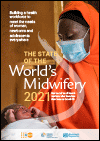
Resource | Publications,
The State of the World’s Midwifery (SoWMy) 2021 builds on previous reports in the SoWMy series and represents an unprecedented effort to document the whole world’s Sexual, Reproductive, Maternal, Newborn and Adolescent Health (SRMNAH) workforce, with a particular focus on midwives. It calls for urgent investment in midwives to enable them to fulfil their potential to contribute towards UHC and the SDG agenda.

Resource | Publications,
WHO’s Global Tuberculosis (TB) Programme has published a book that provides a global synthesis of results and lessons learned from national TB prevalence surveys implemented 2007-2016. This was a collaborative effort of 24 countries and their technical partners with contributions from more than 450 people.
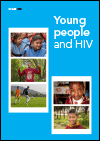
Resource | Publications,
Two out of every seven new HIV infections globally in 2019 were among young people (15–24 years). Additional efforts need to be made to address the structural factors that increase the vulnerability of adolescent girls, young women and young key populations and their risk of acquiring HIV, such as gender inequalities, gender-based violence, poverty, stigma and discrimination, and insufficient implementation of comprehensive sexuality education programmes.
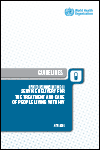
Resource | Publications,
These guidelines provide new and updated recommendations and good practice statements in the following areas: starting ART, including initiating treatment outside the clinic and support for same-day ART start; frequency of clinical visits and ART refills; measuring adherence; tracing and re-engagement in care for all populations; psychosocial support for adolescents living with HIV; task sharing for diagnostic services; and service integration.
This guideline seeks to provide support to Member States, programme managers, health workers and other stakeholders seeking to achieve national and international goals to end the HIV epidemic as a public health threat by 2030.

Resource | Publications,
2020 UN Thailand Results Report provides an overview of the achievements of the United Nations Country Team (UNCT) in Thailand in 2020.

Resource | Fact Sheets,
In April 2021, there were 1,120 confirmed HIV-positive individuals reported to the HIV/AIDS & ART Registry of the Philippines (HARP) and were accounted to the total (86,771) reported cases since January 1984. Moreover, 17% (193) had clinical manifestations of advanced HIV infection at the time of testing. Ninety-six percent (1,076) of the reported cases were male. Of the total male cases, 1% (15) reported their gender-identity as female (transgender women) at the time of testing.
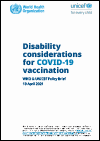
Resource | Publications,
Persons with disabilities are disproportionately impacted by COVID-19, both directly because of infection, and indirectly because of restrictions to reduce the spread of the virus. Persons with disabilities are a diverse group, and the risks, barriers and impacts faced by them will vary in different contexts according to, among other factors, their age, gender identity, type of disability, ethnicity, sexual orientation, and migration status.
This document presents considerations and actions for the following stakeholders to ensure equity in access to vaccination against COVID‑19 for persons with disabilities.





